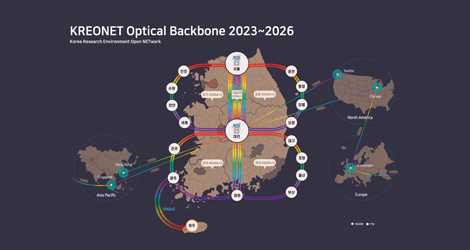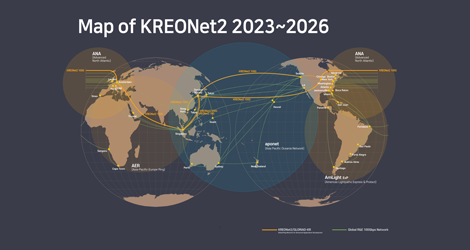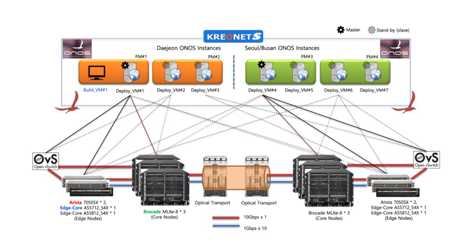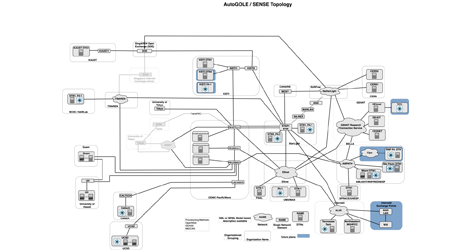메인 비주얼
-
KREONET(Korea Research Environment Open NETwork)
KREONET is a high-performance backbone network designed to support the research and education community in Korea. By connecting 18 regional centers across the country, it offers transmission speeds ranging from 200 Gbps to 1.2 Tbps. By linking with domestic and international backbone networks, Internet Exchange nodes (IX), and National Data Exchange nodes (NDex), KREONET provides research network services and internet services to over 200 member institutions.
READ MORE -
KREONet2
By 2025, KREONet2 has established a global 100 Gbps ring connecting Asia (Daejeon, Hong Kong), North America (Seattle, Chicago), Europe (Amsterdam), and Asia (Singapore, Daejeon) to support international research collaboration.
READ MORE -
KREONET NOC
KREONET-NOC has been providing uninterrupted and reliable 24×7×365 services for over 35 years, since the launch of the national science and technology research network project in 1988.
READ MORE -
KAFE(Korea Access Federation)
KAFE is a trust-based global authentication and access management service that allows users to access global research and science technology platforms with a single account.
READ MORE -
Network slicing: VDN
KREONET provides network slicing services based on Virtual Dedicated Network (VDN) system and Wide-area SDN (Software Defined Network) Infrastructure (KREONET-S).
READ MORE -
eduroam
eduroam is a service that allows users to access Wi-Fi at affiliated institutions worldwide with only their institutional authentication information.
READ MORE -
Globus
KREONET provides a software-based data transfer platform service (Globus) that supports high-speed transfer of large-capacity data between collaborative research institutions in the form of SaaS (Software as a Service).
READ MORE -
perfSONAR
KREONET provides a network performance measurement service based on perfSONAR. This service continuously monitors various network performance metrics, helping to proactively detect and resolve network issues.
READ MORE -
NDeX
The KISTI National Data Exchange Node (NDeX) project aims to build infrastructure and operational systems for ultra-high-performance national large-scale data exchange nodes, including development of core technologies(non-blocking optical packet switching, Software data exchange, T&I, operation and management).
READ MORE
Latest news
LEARN MORE2025.12.11.
KREONET 2025 Research & Innovation Support HighlightsKREONET 2025 Research & Innovation Support Highlights
09 2025.09.
Sweden-Korea Polar Connect Roundtable Dialog29 2025.08.
KREONET Workshop 2025









